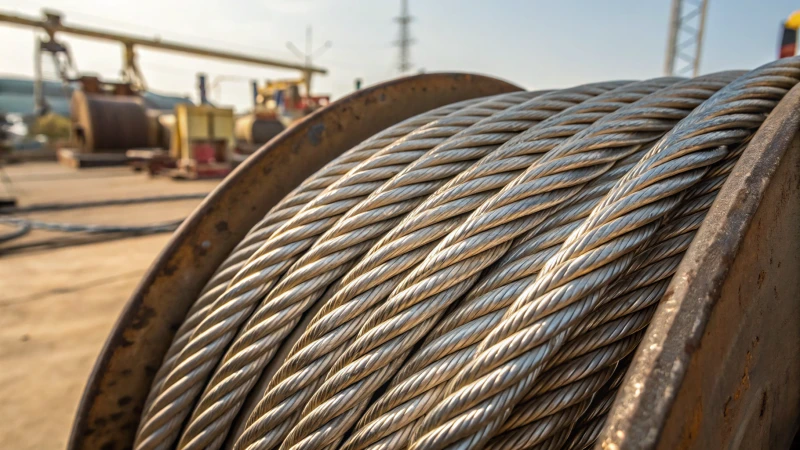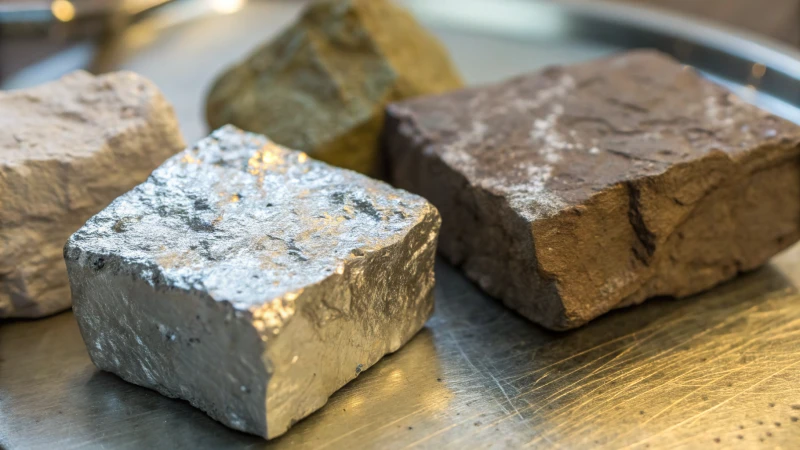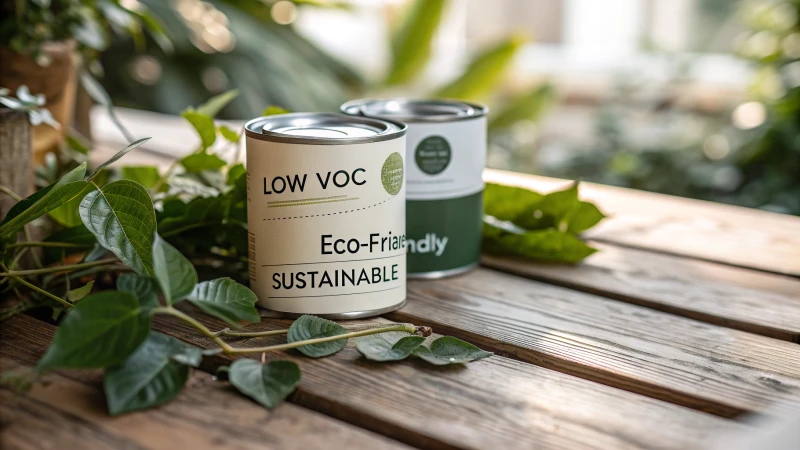
Ever wonder why steel wire ropes can withstand harsh chemicals? Let me share what I've learned.
Steel wire rope is chemically resistant because it often uses corrosion-resistant alloys like stainless steel and has protective coatings such as chrome plating. These features greatly enhance its durability, particularly in environments rich in acids and solvents.
I remember when I first delved into the world of steel wire ropes. It was fascinating to learn how these robust ropes could resist the harshest chemical environments. The secret lies in the materials used—corrosion-resistant alloys and innovative coatings are the heroes here. They not only extend the lifespan of the ropes but also make them reliable in demanding industrial settings. Understanding these elements is crucial for anyone looking to invest in materials that won’t give up under chemical stress. Whether you're in construction, mining, or manufacturing, choosing the right rope can make a world of difference.
Stainless steel enhances rope's chemical resistance.True
Stainless steel is corrosion-resistant, improving durability in harsh environments.
Chrome plating reduces steel rope's chemical resistance.False
Chrome plating enhances chemical resistance by providing a protective layer.
Why are Chrome-Plated Wire Ropes Chemically Resistant?
Have you ever wondered why chrome-plated wire ropes stand up so well in hostile environments? Let me share a personal insight.
Chrome plating boosts the chemical resistance of wire ropes by creating a protective layer that shields the underlying steel from corrosive agents. This barrier effectively minimizes rust and wear, significantly prolonging the ropes' lifespan even in the toughest conditions.

The Science Behind Chrome Plating
I remember the first time I learned about the magic of chrome plating. It was during a project that involved setting up machinery near a saltwater environment. The conditions were brutal, and I was worried about corrosion. That's when I discovered the power of chrome plating—a process where a thin chromium layer is deposited onto the wire ropes, forming a hard, protective surface. This shield is resistant to both corrosion1 and abrasion, thanks to chromium's natural ability to fend off oxidation, especially in environments filled with acids and solvents.
Table: Benefits of Chrome Plating
| Feature | Impact |
|---|---|
| Hardness | Increases wear resistance |
| Corrosion Resistance | Reduces rust formation |
| Aesthetic Appeal | Improves visual appearance |
Performance in Corrosive Environments
In industries like mining and construction, where exposure to corrosive chemicals is part of the daily grind, chrome-plated wire ropes are lifesavers. I once worked on a construction site where the equipment faced constant chemical exposure. Opting for chrome-plated ropes was like giving our tools a suit of armor—keeping those damaging chemical interactions2 at bay and ensuring the steel stayed strong.
Example: Usage in Chemical Plants
In chemical plants, where the atmosphere seems almost determined to wear down every bit of metal, chrome-plated wire ropes prove their worth by drastically cutting down on maintenance costs and stretching out the operational life of equipment.
Comparing Materials
When deciding on materials for these demanding settings, I’ve often found myself weighing options. Compared to other coatings like zinc or polyurethane, chrome consistently stands out for its unmatched hardness and longevity. Take a look at this comparison:
| Coating Type | Corrosion Resistance | Wear Resistance |
|---|---|---|
| Chrome | High | High |
| Zinc | Moderate | Moderate |
| Polyurethane | Low | High |
The Environmental Perspective
With a growing shift towards eco-friendly practices in many industries, including my own, choosing materials that align with sustainability goals is more important than ever. Chrome-plated wire ropes not only offer durability but also reduce waste thanks to their long-lasting nature. For those of us aiming to be more environmentally conscious, it’s worth exploring eco-friendly materials3 currently used in industry.
Chrome plating resists corrosion and abrasion.True
Chrome's innate resistance to oxidation provides a protective barrier.
Polyurethane offers higher corrosion resistance than chrome.False
Chrome provides superior corrosion resistance compared to polyurethane.
How Do Alloying Elements Enhance Corrosion Resistance?
Ever wondered why some metals seem almost immune to rust while others fall apart?
Alloying elements such as chromium, nickel, and molybdenum enhance corrosion resistance by forming protective oxide layers and improving passivation. These elements alter the metal's microstructure, reducing environmental degradation and extending its lifespan.

Role of Chromium in Corrosion Resistance
Let me take you back to a time when I was utterly fascinated by how stainless steel stands up against rust. It turns out chromium is the star player here. When added to steel, chromium reacts with oxygen to create a thin but incredibly resilient oxide layer. This passivation4 layer acts like an invisible shield, keeping oxidation at bay and protecting the underlying metal. So, if you've ever marveled at the longevity of your stainless steel kitchenware or architectural wonders, it's largely thanks to this magical layer formed by chromium. Trust me, once you've seen stainless steel with over 10.5% chromium content in action, you won't settle for less.
Importance of Nickel and Molybdenum
Nickel brings a lot to the table—literally. Imagine working in an acidic environment where most metals would crumble; nickel is what keeps our alloys tough and ductile. It stabilizes the austenitic structure, making stainless steels significantly less prone to corrosion. And let's not forget molybdenum, which is like that friend who ensures nothing goes awry when you're near the sea. It fortifies alloys against pitting and crevice corrosion. Just think of marine applications where 316 stainless steel with extra molybdenum simply excels. The next time you're near saltwater, remember it's these elements that keep things running smoothly.
| Element | Benefit | Example Usage |
|---|---|---|
| Chromium | Forms protective oxide layer | Stainless steel manufacturing |
| Nickel | Increases toughness | Acidic environment applications |
| Molybdenum | Reduces pitting | Marine equipment |
Effects of Other Alloying Elements
The story doesn't end with chromium, nickel, and molybdenum. Other elements like copper, silicon, and manganese also play their part in enhancing corrosion resistance5. Copper is fantastic when dealing with sulfuric acid resistance, while silicon steps up to improve high-temperature oxidation resistance. Manganese? It's like the unsung hero in the steel production process, deoxidizing the metal and supporting corrosion resistance by purifying it.
Understanding how these elements work together is key to developing materials that can withstand the toughest conditions. Whether you're crafting a skyscraper or building machinery for extreme environments, the right blend of alloying elements can make all the difference.
Chromium forms a protective oxide layer on steel.True
Chromium reacts with oxygen to form a stable oxide layer, enhancing corrosion resistance.
Nickel decreases toughness in stainless steels.False
Nickel actually increases the ductility and toughness of stainless steels.
Why Are Eco-Friendly Coatings Gaining Popularity?
Ever wonder why eco-friendly coatings are stealing the spotlight these days? It seems like everyone, from construction managers to home DIY enthusiasts, is talking about them.
Eco-friendly coatings are gaining popularity because they reduce environmental impact, comply with strict regulations, and meet the rising consumer demand for sustainable products. These coatings provide robust protection while minimizing emissions and waste, making them a smart choice for eco-conscious buyers.

Environmental Benefits of Eco-Friendly Coatings
I remember when I first heard about eco-friendly coatings. It was during a visit to a friend who had just renovated her house. She was so excited about her new eco-friendly paint that she practically dragged me from room to room, pointing out how it was not only beautiful but also better for the environment. These coatings contain fewer volatile organic compounds (VOCs), which are notorious for contributing to air pollution and health issues. Instead, they use renewable resources or biodegradable materials, making them a sustainable choice6 for all sorts of applications.
Regulatory Compliance and Industry Shifts
I’ve noticed that stricter regulations are transforming industries everywhere. Remember when we had to adjust to new recycling rules? Well, industries are experiencing something similar. With laws like the Clean Air Act in the USA and REACH in the EU, companies are being nudged (or pushed!) towards eco-friendly alternatives. Eco-friendly coatings not only meet these regulations but can also enhance brand reputation7 by showing that a company cares about more than just profits.
| Region | Key Regulations |
|---|---|
| USA | The Clean Air Act's VOC limits |
| EU | REACH regulation for chemicals |
| China | China's Environmental Protection Law |
Consumer Preferences and Market Trends
The other day at a local market, I overheard a group of people discussing how they prefer buying eco-friendly products now that they know more about environmental issues. This shift in consumer behavior is pushing manufacturers to innovate and invest in sustainable solutions. As a result, eco-friendly coatings are becoming more mainstream8 in industries like automotive and construction.
Performance and Cost Efficiency
One common misconception I’ve come across is that eco-friendly means sacrificing quality. However, today’s eco-friendly coatings prove otherwise. Innovations have led to formulations that provide excellent resistance to elements like corrosion and weathering. Plus, with longer-lasting protection and reduced maintenance costs, these coatings are a smart investment9 for anyone looking to save money in the long run.
Eco-friendly coatings reduce VOC emissions significantly.True
Eco-friendly coatings contain fewer VOCs, leading to reduced air pollution.
Eco-friendly coatings are less durable than traditional ones.False
Modern eco-friendly coatings offer equal or superior durability.
What Should You Consider When Selecting Chemical-Resistant Wire Ropes?
Ever had that moment when you realize your wire ropes aren't holding up against harsh chemicals? Let's make sure that doesn't happen again!
When selecting chemical-resistant wire ropes, I always prioritize material composition, coating types, and environmental compatibility. These elements are crucial for ensuring the ropes can withstand corrosive environments while maintaining durability.

Material Composition
I remember a time when I had to choose between different wire ropes for a project that involved an extremely acidic environment. It was crucial to opt for something that wouldn’t just crumble under pressure. Stainless steel became my go-to choice because of its incredible corrosion resistance.
Comparison Table: Material Options
| Material Type | Chemical Resistance | Typical Use Case |
|---|---|---|
| Stainless Steel | High | Acidic environments |
| Galvanized Steel | Moderate | General use |
Coating Types
Choosing the right coating can be a game-changer. I've learned from experience that chrome plating can enhance a rope's resistance to corrosion by up to 50%. One time, I had to deal with an environment filled with alkaline substances. The PVC coating came in handy, providing excellent resistance. Meanwhile, for more flexible applications, nylon proved moderately resistant, while Teflon was the hero in extreme chemical conditions.
- PVC Coating: Provides excellent resistance against alkaline substances.
- Nylon Coating: Offers flexibility and moderate chemical resistance.
- Teflon Coating: Ideal for extreme chemical environments due to its high resistance.
Environmental Compatibility
Understanding the specific environmental conditions10 is vital. Once, I made the mistake of not considering temperature fluctuations, which led to premature wear on a project. Now, I ensure to match the rope’s characteristics with the environment's needs. For instance, chrome-plated ropes perform excellently in high acid concentrations, while nylon-coated ropes are perfect for areas with variable temperatures and moderate chemical exposure.
Performance Characteristics
The load-bearing capacity and flexibility of the rope should never be overlooked. Whether you're lifting, pulling, or hoisting, each action demands specific performance attributes11. I always ensure the rope can handle the required weight without compromising its chemical resistance. Plus, flexibility is key, especially when dealing with complex maneuvers.
- Load Capacity: Ensure the rope can handle the required weight without compromising chemical resistance.
- Flexibility: Choose ropes that maintain flexibility while resisting chemical breakdown.
Industry Standards and Certifications
I’ve learned that industry standards are non-negotiable. Selecting wire ropes that meet safety and reliability standards provides peace of mind and assures you of their effectiveness in chemical-resistant applications.
- ISO Standards: Check if the product complies with ISO standards for corrosion resistance.
- ASTM Standards: Ensure the rope meets ASTM requirements for chemical exposure.
Supplier Reliability
Finally, trust your supplier! A reliable supplier's reputation12 is critical. Their ability to provide after-sales support and detailed product specifications can significantly impact the rope's lifespan and performance. I once partnered with a supplier known for quality and reliability, and it made all the difference in achieving project success.
Stainless steel ropes resist acidic environments.True
Stainless steel offers superior protection against acids due to its alloy composition.
Nylon coating is best for high acid concentration areas.False
Nylon offers moderate chemical resistance, not ideal for high acid concentrations.
Conclusion
Steel wire ropes exhibit chemical resistance through corrosion-resistant alloys like stainless steel and protective coatings such as chrome plating, enhancing durability in harsh environments.
-
Discover how chrome plating acts as a protective barrier against corrosion. ↩
-
Learn why chrome-plated ropes are preferred in harsh chemical environments. ↩
-
Explore sustainable materials in wire rope production to support eco-friendly goals. ↩
-
Learn how passivation creates a protective oxide layer on metals, essential for preventing corrosion. ↩
-
Explore the roles of copper and silicon in enhancing metal durability against corrosion. ↩
-
Discover how these coatings use renewable resources and reduce environmental impact. ↩
-
Learn how adopting sustainable practices can enhance your brand's image. ↩
-
Explore the latest trends driving the popularity of sustainable coatings. ↩
-
Find out why these coatings are a smart financial choice over time. ↩
-
Understanding specific environmental conditions is key to selecting suitable wire ropes for chemical exposure. ↩
-
Learn about performance attributes like load capacity and flexibility for choosing the right wire ropes. ↩
-
Finding reliable suppliers ensures product quality and effective after-sales support. ↩

